 Technology peripherals
Technology peripherals
 AI
AI
 From basics to practice, review the development history of Elasticsearch vector retrieval
From basics to practice, review the development history of Elasticsearch vector retrieval
From basics to practice, review the development history of Elasticsearch vector retrieval

1. Introduction
Vector retrieval has become a core component of modern search and recommendation systems.
It enables efficient query matching and recommendations by converting complex objects (such as text, images or sounds) into numerical vectors and conducting similarity searches in multi-dimensional space.
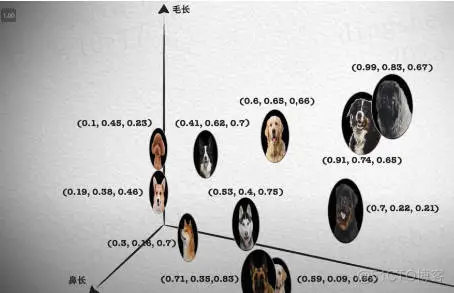 From basics to practice, review the development history of Elasticsearch vector retrieval_elasticsearch
From basics to practice, review the development history of Elasticsearch vector retrieval_elasticsearch
As a popular open source search engine, Elasticsearch has its advantages in vector retrieval. Development has also been of great concern. This article will review the development history of Elasticsearch vector retrieval, focusing on the characteristics and progress of each stage. Taking history as a guide will help everyone establish a full understanding of Elasticsearch vector retrieval.
2. Initial attempt: Introduction of simple vector retrieval
Elasticsearch was not initially designed specifically for vector retrieval. However, with the rise of machine learning and artificial intelligence, the demand for querying high-dimensional vector spaces has gradually increased.
In the 5.x version of Elasticsearch, Elastic enthusiasts began to try to implement simple vector retrieval functions through plug-ins and basic mathematical operations. For example: some early plug-ins such as elasticsearch-vector-scoring and fast-elasticsearch-vector-scoring are designed to meet such needs.
https://www.php.cn/link/7a677bb4477ae2dd371add568dd19e23
##https://www.php.cn/link/7684e5225ab986f6b32ed950eec5621d
Vector retrieval at this stage is mainly used for basic similarity queries, such as text similarity calculation. Although the functions are relatively limited, it lays the foundation for subsequent development. Extension: Regarding the machine learning function, if you are interested in the Elasticsearch version change, I remember that the 6.X version was launched at that time, which was very exciting. However, due to non-open source functions, the real domestic audience is still relatively small. 3. Official support: Further development to Elasticsearch 7.0 version, officially began to add support for vector fields, such as through the dense_vector type. This marks that Elasticsearch officially enters the field of vector retrieval and no longer relies solely on plug-ins. dense_vector Earliest launch time: December 13, 2018, version 7.6 is marked GA.https://www.php.cn/link/648f4baa45889f9c5f4f7add35862841
##https://www.php.cn/link/ac10ff1941c540cd87c107330996f4f6Regarding the use of dense_vector type, recommended reading: High-dimensional vector search: Practical exploration of using dense_vector in Elasticsearch 8.X.
The main challenge at this stage is how to effectively support vector retrieval in the traditional inverted index structure. When combined with existing full-text search capabilities, Elasticsearch provides a flexible and powerful solution.
From the initial plug-ins and basic operations to the later official support and integration, this stage laid a solid foundation for further innovation and optimization of Elasticsearch in vector retrieval.
4. Specialized optimization: enhanced similarity calculation
With the growth of demand, the Elasticsearch team began to conduct in-depth research and optimize vector retrieval performance. This involves the introduction of more complex similarity calculation methods, such as cosine similarity, Euclidean distance, etc., as well as optimization of query execution.
Starting from Elasticsearch version 7.3, the official introduced a more complex similarity calculation method. In particular, the enhancements to the script_score query allow users to customize richer similarity calculations through Painless scripts.
/guide/en/elasticsearch/reference/7.3/query-dsl-script-score-query.html#vector-functions
The core function is to allow calculation of angles between vectors Similarity, uses the cosine similarity distance metric of k-nearest neighbors (k-NN) to provide support for similarity search engines. It is widely used in text analysis and recommendation systems.
Mainly used to solve: complex similarity requirements, providing more flexible and powerful similarity calculation options to meet more business needs.
Application scenarios are reflected in:
(1)个性化推荐:通过余弦相似度分析用户的行为和兴趣,提供更个性化的推荐内容;(2)图像识别和搜索:使用欧几里得距离快速检索与给定图像相似的图像;(3)声音分析:在声音文件之间寻找相似模式,用于语音识别和分析。
It is worth mentioning that: initially, the dimensions supported by vector retrieval were: 1024, until Elasticsearch 8.8 version, the supported dimensions were changed to: 2048 (this is a very popular demand).
https://www.php.cn/link/1bda7493c968ded9800b3a754fc07e5c/t/vector-knn-search-with-more-than-1024-dimensions/ 332819
Elasticsearch 7.x 版本的增强相似度计算功能标志着向量检索能力的显著进展。通过引入更复杂的相似度计算方法和查询优化,Elasticsearch 不仅增强了其在传统搜索场景中的功能,还为新兴的机器学习和 AI 应用打开了新的可能性。
但,这个时候你会发现,如果要实现复杂的向量搜索功能,自己实现的还很多。如果把后面马上提到的深度学习的集成和大模型的出现比作:飞行的汽车,当前的阶段还是 “拉驴车”,功能是有的,但用起来很费劲。
 从基础到实践,回顾Elasticsearch 向量检索发展史_Elastic_02
从基础到实践,回顾Elasticsearch 向量检索发展史_Elastic_02
5.深度学习集成与未来展望
大模型时代,向量检索和多模态搜索成为 “兵家” 必争之地。
多模态检索是一种综合各种数据模态(如文本、图像、音频、视频等)的检索技术。换句话说,它不仅仅是根据文字进行搜索,还可以根据图像、声音或其他模态的输入来搜索相关内容。
为了更通俗地理解多模态检索,我们可以通过以下比喻和示例来加深认识:想象你走进一个巨大的图书馆,这里不仅有书籍,还有各种图片、录音和视频。你可以向图书馆员展示一张照片,她会为你找到与这张照片相关的所有书籍、音频和视频。或者,你可以哼一段旋律,图书馆员能找到相关的资料,或者提供类似的歌曲或视频。这就是多模态检索的魔力!
随着深度学习技术的不断发展和应用,Elasticsearch 已开始探索将深度学习模型直接集成到向量检索过程中。这不仅允许更复杂、更准确的相似度计算,还开辟了新的应用领域,例如基于图像或声音的搜索。尤其在 Elasticsearch 的 8.x 版本,这一方向得到了显著的推进。
5.1 向量化是前提
如下图所示,先从左往右看是写入,图像、文档、音频转化为向量特征表示,在 Elasticsearch 中通过 dense_vector 类型存储。
从右往左看是检索,先将检索语句转化为向量特征表示,然后借助 K 近邻检索算法(在 Elasticsearch 中借助 Knn search 实现),获取相似的结果。
看中间,Results 部分就是向量检索的结果。
综上,向量检索打破了传统倒排索引仅支持文本检索的缺陷,可以扩展支持文本、语音、图像、视频多种模态。
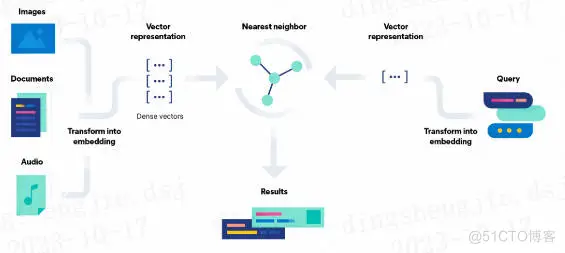 图片来自:Elasticsearch 官方文档
图片来自:Elasticsearch 官方文档
相信你到这里,应该理解了向量检索和多模态。没有向量化的这个过程,多模态检索无从谈起。
5.2 模型是核心
深度学习模型集成总共可分为三步:
第一步:模型导入和管理:Elasticsearch 8.x 支持导入预训练的深度学习模型,并提供相应的模型管理工具,方便模型的部署和更新。第二步:向量表示与转换:通过深度学习模型,可以将非结构化数据如图像和声音转换为向量表示,从而进行有效的检索。第三步:自定义相似度计算:8.x 版本提供了基于深度学习模型的自定义相似度计算接口,允许用户根据实际需求开发和部署专门的相似度计算方法。
关于深度学习,可以是自训练模型,也可以是第三方模型库中的模型,举例:咱们图搜图案例中就是用的 HuggingFace 里的:clip-ViT-B-32-multilingual-v1 模型。
 从基础到实践,回顾Elasticsearch 向量检索发展史_Elastic_04
从基础到实践,回顾Elasticsearch 向量检索发展史_Elastic_04
Elasticsearch 支持的第三方模型列表:
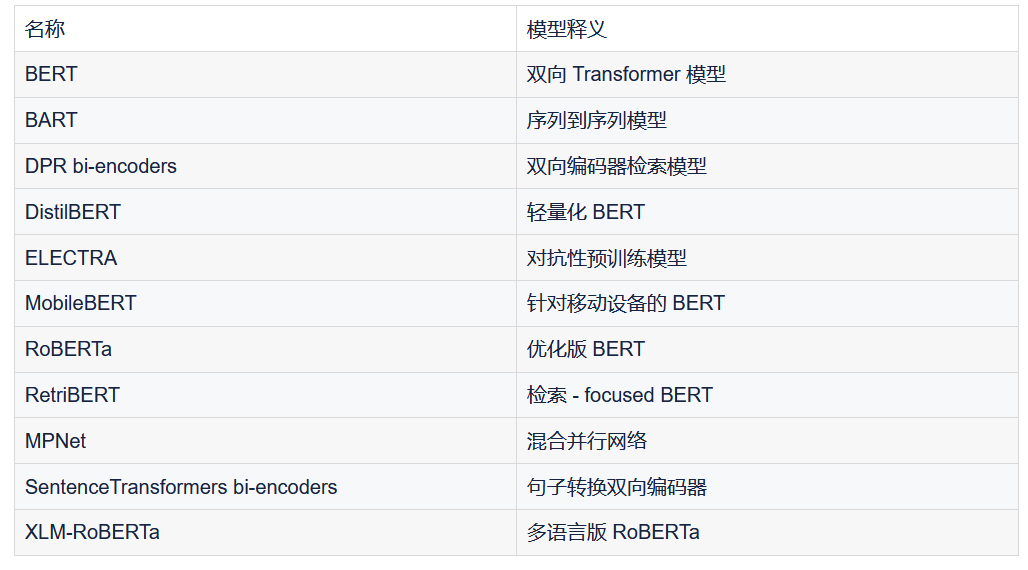
包括如下的 Hugging Face 模型库也都是支持的。
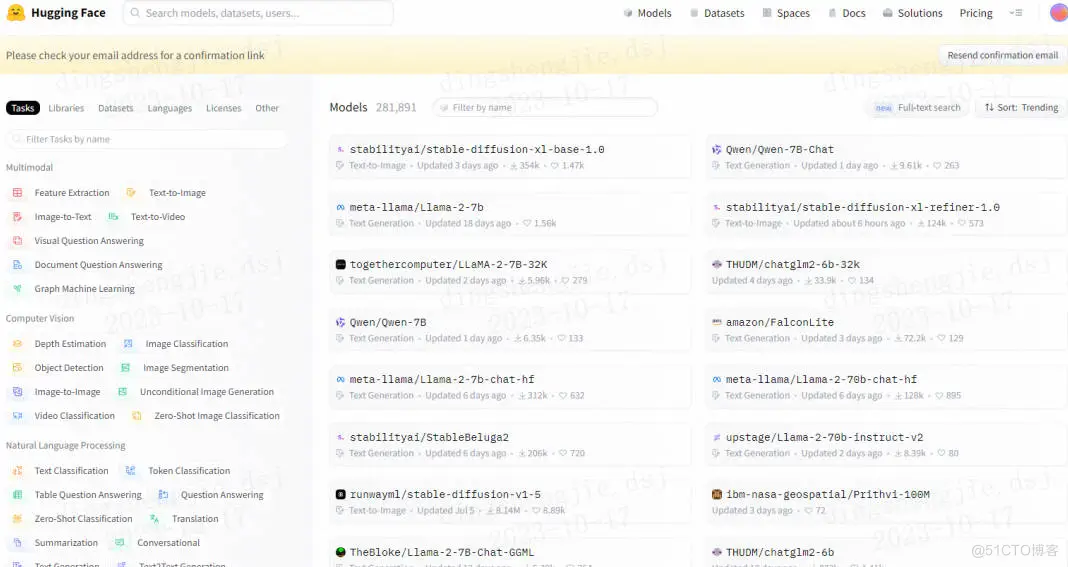 从基础到实践,回顾Elasticsearch 向量检索发展史_elasticsearch_05
从基础到实践,回顾Elasticsearch 向量检索发展史_elasticsearch_05
模型是 Elasticsearch 与深度学习集成的核心,它能将复杂的数据转化为 “指纹” 向量,使搜索更高效和智能。借助模型,Elasticsearch 可以理解和匹配各种非结构化数据,如图像和声音,提供更为准确和个性化的搜索结果,同时适应不断变化的数据和需求。“没有了模型,我们还需要黑暗中摸索很久”。
第三方模型官网介绍:/guide/en/machine-learning/8.9/ml-nlp-model-ref.html#ml-nlp-model-ref-text-embedding
值得一提的是:Elasticsearch 导入大模型需要专属 Python 客户端工具 Eland。
Eland 是一个 Python Elasticsearch 客户端,让用户能用类似 Pandas 的 API 来探索和分析 Elasticsearch 中的数据,还支持从常见机器学习库上传训练好的模型到 Elasticsearch。
Eland 是为了与 Elasticsearch 协同工作而开发的库。它不是 Elasticsearch 的一个特定版本产物,而是作为一个独立的项目来帮助 Python 开发者更方便地在 Elasticsearch 中进行数据探索和机器学习任务。
Eland 更多参见:
/guide/en/elasticsearch/client/eland/current/index.html
https://www.php.cn/link/47e57c4836ae0c44f774f9d8497e0b4f
5.3 ESRE 是 Elastic 的未来
前一段时间在分别给两位阿里云、腾讯云大佬聊天的时候,都提到了 Elasticsearch Relevance Engine (ESRE) 才是 Elastic 未来。
ESRE 官方介绍如下:——Elasticsearch Relevance Engine 将 AI 的最佳实践与 Elastic 的文本搜索进行了结合。ESRE 为开发人员提供了一整套成熟的检索算法,并能够与大型语言模型 (LLM) 集成。借助 ESRE,我们可以应用具有卓越相关性的开箱即用型语义搜索,与外部大型语言模型集成,实现混合搜索,并使用第三方或我们自己的模型。
ESRE 集成了高级相关性排序如 BM25f、强大的矢量数据库、自然语言处理技术、与第三方模型如 GPT-3 和 GPT-4 的集成,并支持开发者自定义模型与应用。其特点在于提供深度的语义搜索,与专业领域的数据整合,以及无缝的生成式 AI 整合,让开发者能够构建更吸引人、更准确的搜索体验。
在 Elasticsearch 8.9 版本上新了:Semantic search 语义检索功能,对官方文档熟悉的同学,你会发现如下截图内容,早期版本是没有的。
语义搜索不是根据搜索词进行字面匹配,而是根据搜索查询的意图和上下文含义来检索结果。
更进一步讲:语义搜索不仅仅是匹配你输入的关键字,而是试图理解你的真正意图,给你带来更准确、更有上下文的搜索结果。简单来说,如果你在英国搜索 “football”,系统知道你可能想要搜橄榄球,而不是足球(在美国 football 是足球)。
这种智能搜索方式,得益于强大的文本向量化等技术背景,使我们的在线搜索体验更加直观、方便和满意。
在文本里检索 connection speed requirement, 这点属于早期的倒排索引检索方式,或者叫全文检索中的短语 match_phrase 检索匹配 或者分词 match 检索匹配。这种可以得到结果。但是,中后半段视频显示,要是咱们要检索:“How fast should my internet be” 怎么办?
其实这里转换为向量检索,fast 和 speed 语义相近,should be 和 required、needs 语义相近,internet 和 connection、wifi 语义相近。所以依然能召回结果。
这突破了传统同义词的限制,体现了语义检索的妙处!
更进一步,我们给出语义检索和传统分词检索的区别,以期望大家更好的理解语义搜索。
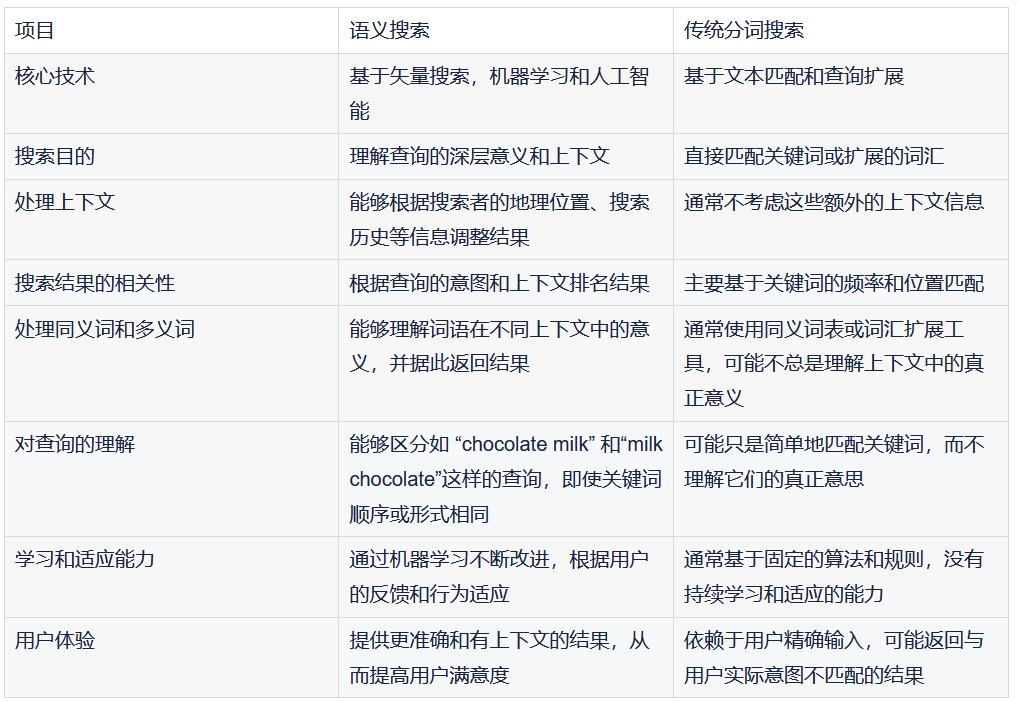
总体而言,深度学习集成已经成为 Elasticsearch 向量检索能力的有力补充,促使它在搜索和分析领域的地位更加牢固,同时也为未来的发展提供了广阔的空间。
6.小结
Elasticsearch 的向量检索从最初的简单实现发展到现在的高效、多功能解决方案,反映了现代搜索和推荐系统的需求和挑战。随着技术的不断演进,我们可以期待 Elasticsearch 在向量检索方面将继续推动创新和卓越。
说一下最近的感触,向量检索、大模型等新技术的出现有种感觉 “学不完,根本学不完”,并且很容易限于 “皮毛论”(我自创的词)——所有技术都了解一点点,但经不起提问;浅了说,貌似啥都懂,深了说,一问三不知。
这种情况怎么办?我目前的方法是:以实践为目的去深入理解理论,必要时理解算法,然后不定期将所看、所思、所想梳理成文,以备忘和知识体系化。这个过程很慢、很累,但我相信时间越长、价值越大。
欢迎大家就向量检索等问题进行留言讨论交流,你的问题很可能就是下一次文章的主题哦!
7.参考
1、/cn/blog/text-similarity-search-with-vectors-in-elasticsearch
2、/guide/en/elasticsearch/reference/7.3/query-dsl-script-score-query.html#vector-functions-cosine
3、https://www.php.cn/link/8b0bb3eff8c1e5bf7f206125959921d7
The above is the detailed content of From basics to practice, review the development history of Elasticsearch vector retrieval. For more information, please follow other related articles on the PHP Chinese website!

Hot AI Tools

Undresser.AI Undress
AI-powered app for creating realistic nude photos

AI Clothes Remover
Online AI tool for removing clothes from photos.

Undress AI Tool
Undress images for free

Clothoff.io
AI clothes remover

AI Hentai Generator
Generate AI Hentai for free.

Hot Article

Hot Tools

Notepad++7.3.1
Easy-to-use and free code editor

SublimeText3 Chinese version
Chinese version, very easy to use

Zend Studio 13.0.1
Powerful PHP integrated development environment

Dreamweaver CS6
Visual web development tools

SublimeText3 Mac version
God-level code editing software (SublimeText3)

Hot Topics
 Methods and steps for using BERT for sentiment analysis in Python
Jan 22, 2024 pm 04:24 PM
Methods and steps for using BERT for sentiment analysis in Python
Jan 22, 2024 pm 04:24 PM
BERT is a pre-trained deep learning language model proposed by Google in 2018. The full name is BidirectionalEncoderRepresentationsfromTransformers, which is based on the Transformer architecture and has the characteristics of bidirectional encoding. Compared with traditional one-way coding models, BERT can consider contextual information at the same time when processing text, so it performs well in natural language processing tasks. Its bidirectionality enables BERT to better understand the semantic relationships in sentences, thereby improving the expressive ability of the model. Through pre-training and fine-tuning methods, BERT can be used for various natural language processing tasks, such as sentiment analysis, naming
 Analysis of commonly used AI activation functions: deep learning practice of Sigmoid, Tanh, ReLU and Softmax
Dec 28, 2023 pm 11:35 PM
Analysis of commonly used AI activation functions: deep learning practice of Sigmoid, Tanh, ReLU and Softmax
Dec 28, 2023 pm 11:35 PM
Activation functions play a crucial role in deep learning. They can introduce nonlinear characteristics into neural networks, allowing the network to better learn and simulate complex input-output relationships. The correct selection and use of activation functions has an important impact on the performance and training results of neural networks. This article will introduce four commonly used activation functions: Sigmoid, Tanh, ReLU and Softmax, starting from the introduction, usage scenarios, advantages, disadvantages and optimization solutions. Dimensions are discussed to provide you with a comprehensive understanding of activation functions. 1. Sigmoid function Introduction to SIgmoid function formula: The Sigmoid function is a commonly used nonlinear function that can map any real number to between 0 and 1. It is usually used to unify the
 Beyond ORB-SLAM3! SL-SLAM: Low light, severe jitter and weak texture scenes are all handled
May 30, 2024 am 09:35 AM
Beyond ORB-SLAM3! SL-SLAM: Low light, severe jitter and weak texture scenes are all handled
May 30, 2024 am 09:35 AM
Written previously, today we discuss how deep learning technology can improve the performance of vision-based SLAM (simultaneous localization and mapping) in complex environments. By combining deep feature extraction and depth matching methods, here we introduce a versatile hybrid visual SLAM system designed to improve adaptation in challenging scenarios such as low-light conditions, dynamic lighting, weakly textured areas, and severe jitter. sex. Our system supports multiple modes, including extended monocular, stereo, monocular-inertial, and stereo-inertial configurations. In addition, it also analyzes how to combine visual SLAM with deep learning methods to inspire other research. Through extensive experiments on public datasets and self-sampled data, we demonstrate the superiority of SL-SLAM in terms of positioning accuracy and tracking robustness.
 Latent space embedding: explanation and demonstration
Jan 22, 2024 pm 05:30 PM
Latent space embedding: explanation and demonstration
Jan 22, 2024 pm 05:30 PM
Latent Space Embedding (LatentSpaceEmbedding) is the process of mapping high-dimensional data to low-dimensional space. In the field of machine learning and deep learning, latent space embedding is usually a neural network model that maps high-dimensional input data into a set of low-dimensional vector representations. This set of vectors is often called "latent vectors" or "latent encodings". The purpose of latent space embedding is to capture important features in the data and represent them into a more concise and understandable form. Through latent space embedding, we can perform operations such as visualizing, classifying, and clustering data in low-dimensional space to better understand and utilize the data. Latent space embedding has wide applications in many fields, such as image generation, feature extraction, dimensionality reduction, etc. Latent space embedding is the main
 Understand in one article: the connections and differences between AI, machine learning and deep learning
Mar 02, 2024 am 11:19 AM
Understand in one article: the connections and differences between AI, machine learning and deep learning
Mar 02, 2024 am 11:19 AM
In today's wave of rapid technological changes, Artificial Intelligence (AI), Machine Learning (ML) and Deep Learning (DL) are like bright stars, leading the new wave of information technology. These three words frequently appear in various cutting-edge discussions and practical applications, but for many explorers who are new to this field, their specific meanings and their internal connections may still be shrouded in mystery. So let's take a look at this picture first. It can be seen that there is a close correlation and progressive relationship between deep learning, machine learning and artificial intelligence. Deep learning is a specific field of machine learning, and machine learning
 Super strong! Top 10 deep learning algorithms!
Mar 15, 2024 pm 03:46 PM
Super strong! Top 10 deep learning algorithms!
Mar 15, 2024 pm 03:46 PM
Almost 20 years have passed since the concept of deep learning was proposed in 2006. Deep learning, as a revolution in the field of artificial intelligence, has spawned many influential algorithms. So, what do you think are the top 10 algorithms for deep learning? The following are the top algorithms for deep learning in my opinion. They all occupy an important position in terms of innovation, application value and influence. 1. Deep neural network (DNN) background: Deep neural network (DNN), also called multi-layer perceptron, is the most common deep learning algorithm. When it was first invented, it was questioned due to the computing power bottleneck. Until recent years, computing power, The breakthrough came with the explosion of data. DNN is a neural network model that contains multiple hidden layers. In this model, each layer passes input to the next layer and
 How to use CNN and Transformer hybrid models to improve performance
Jan 24, 2024 am 10:33 AM
How to use CNN and Transformer hybrid models to improve performance
Jan 24, 2024 am 10:33 AM
Convolutional Neural Network (CNN) and Transformer are two different deep learning models that have shown excellent performance on different tasks. CNN is mainly used for computer vision tasks such as image classification, target detection and image segmentation. It extracts local features on the image through convolution operations, and performs feature dimensionality reduction and spatial invariance through pooling operations. In contrast, Transformer is mainly used for natural language processing (NLP) tasks such as machine translation, text classification, and speech recognition. It uses a self-attention mechanism to model dependencies in sequences, avoiding the sequential computation in traditional recurrent neural networks. Although these two models are used for different tasks, they have similarities in sequence modeling, so
 Improved RMSprop algorithm
Jan 22, 2024 pm 05:18 PM
Improved RMSprop algorithm
Jan 22, 2024 pm 05:18 PM
RMSprop is a widely used optimizer for updating the weights of neural networks. It was proposed by Geoffrey Hinton et al. in 2012 and is the predecessor of the Adam optimizer. The emergence of the RMSprop optimizer is mainly to solve some problems encountered in the SGD gradient descent algorithm, such as gradient disappearance and gradient explosion. By using the RMSprop optimizer, the learning rate can be effectively adjusted and the weights adaptively updated, thereby improving the training effect of the deep learning model. The core idea of the RMSprop optimizer is to perform a weighted average of gradients so that gradients at different time steps have different effects on weight updates. Specifically, RMSprop calculates the square of each parameter





